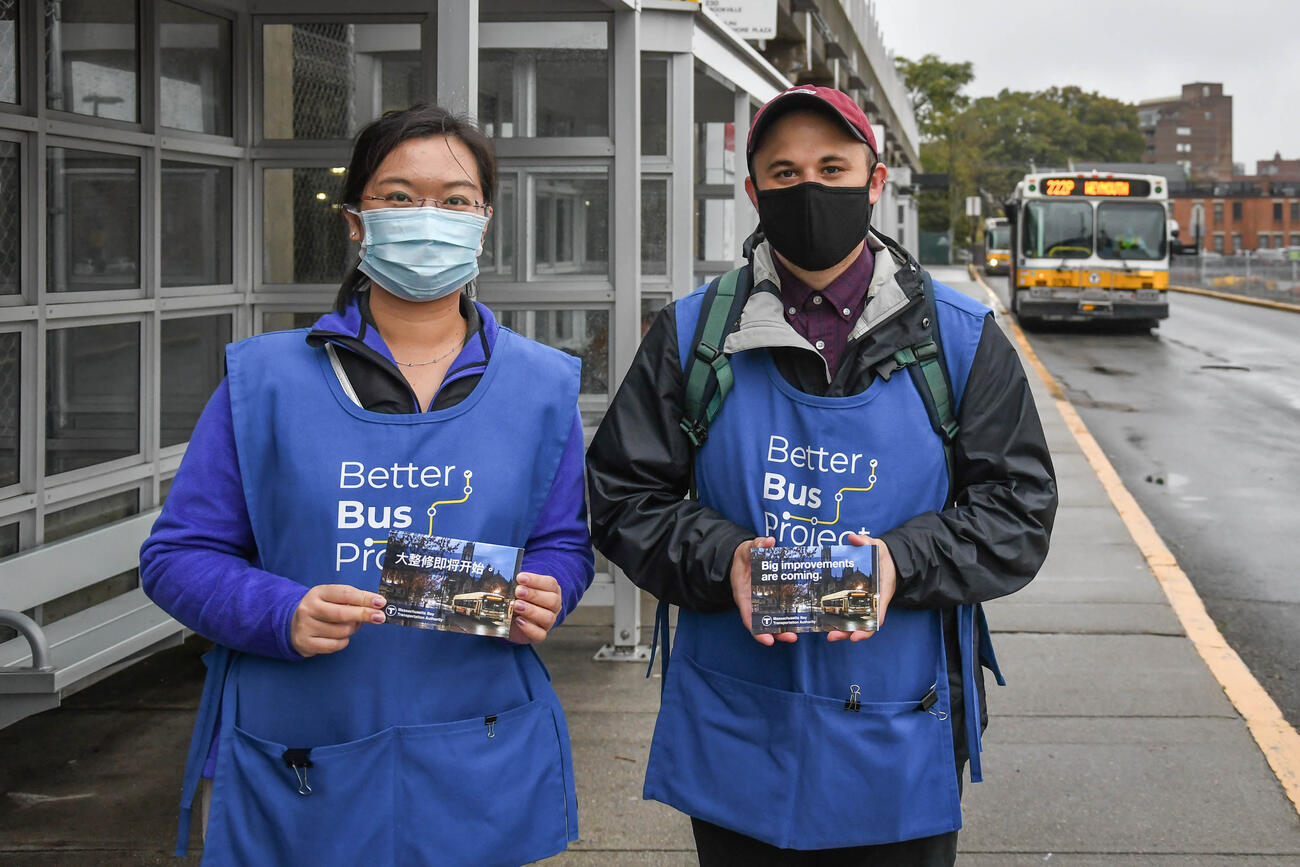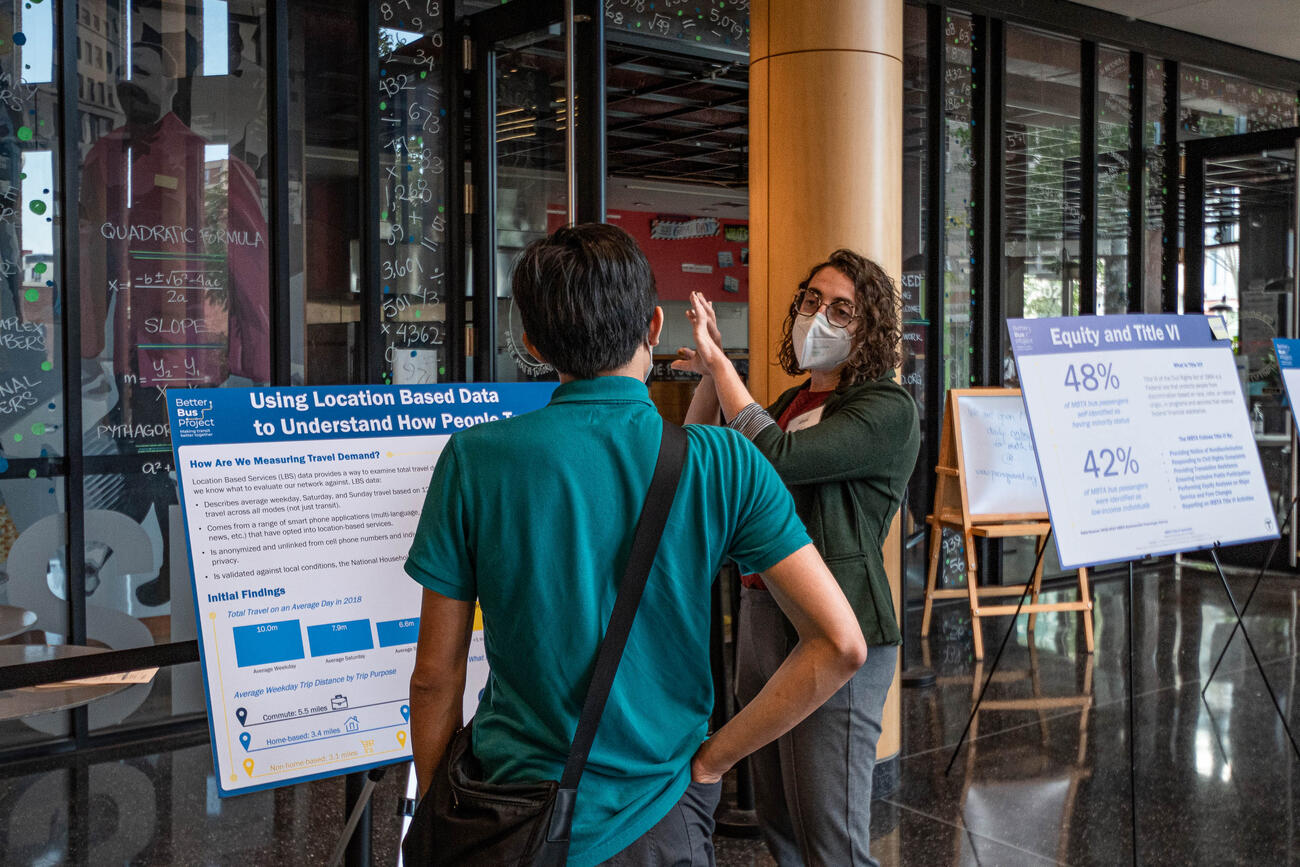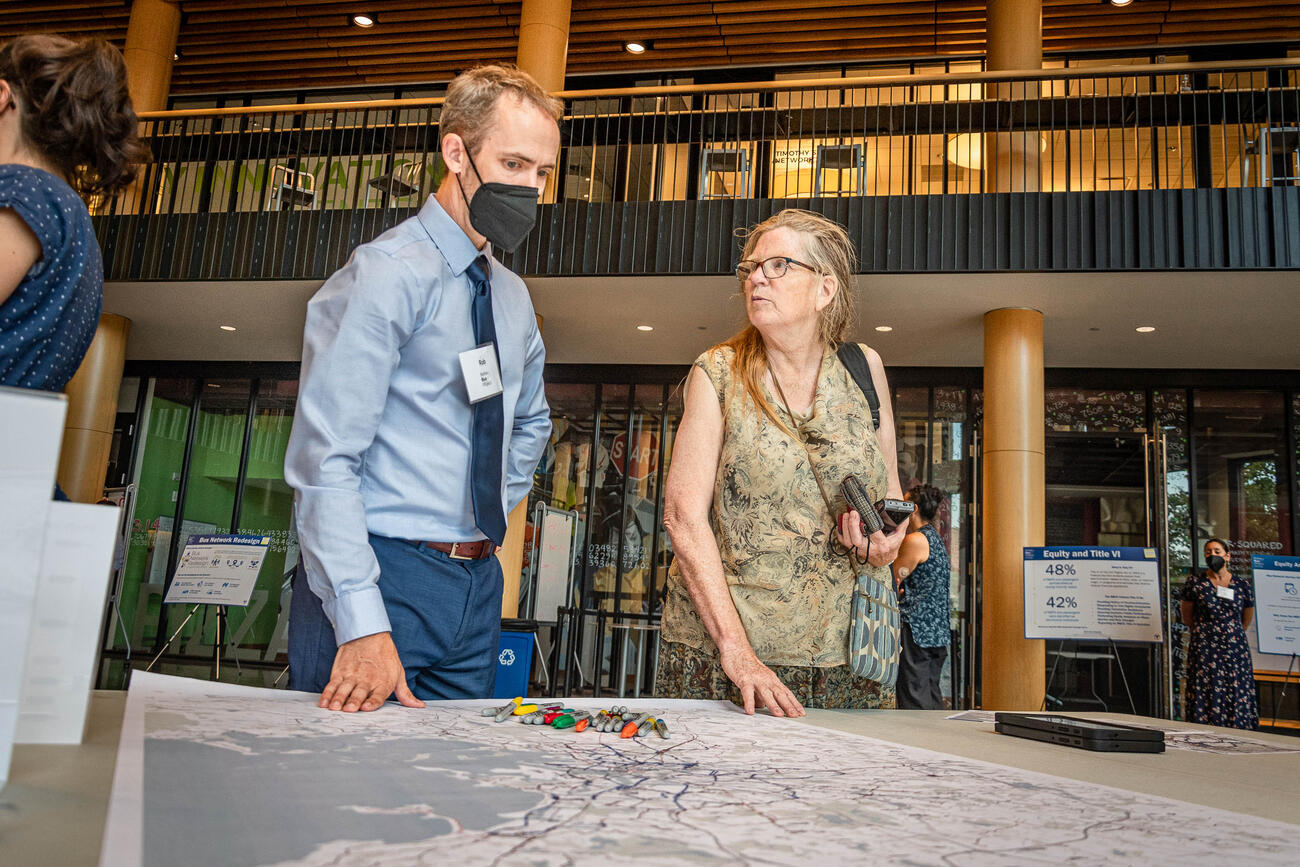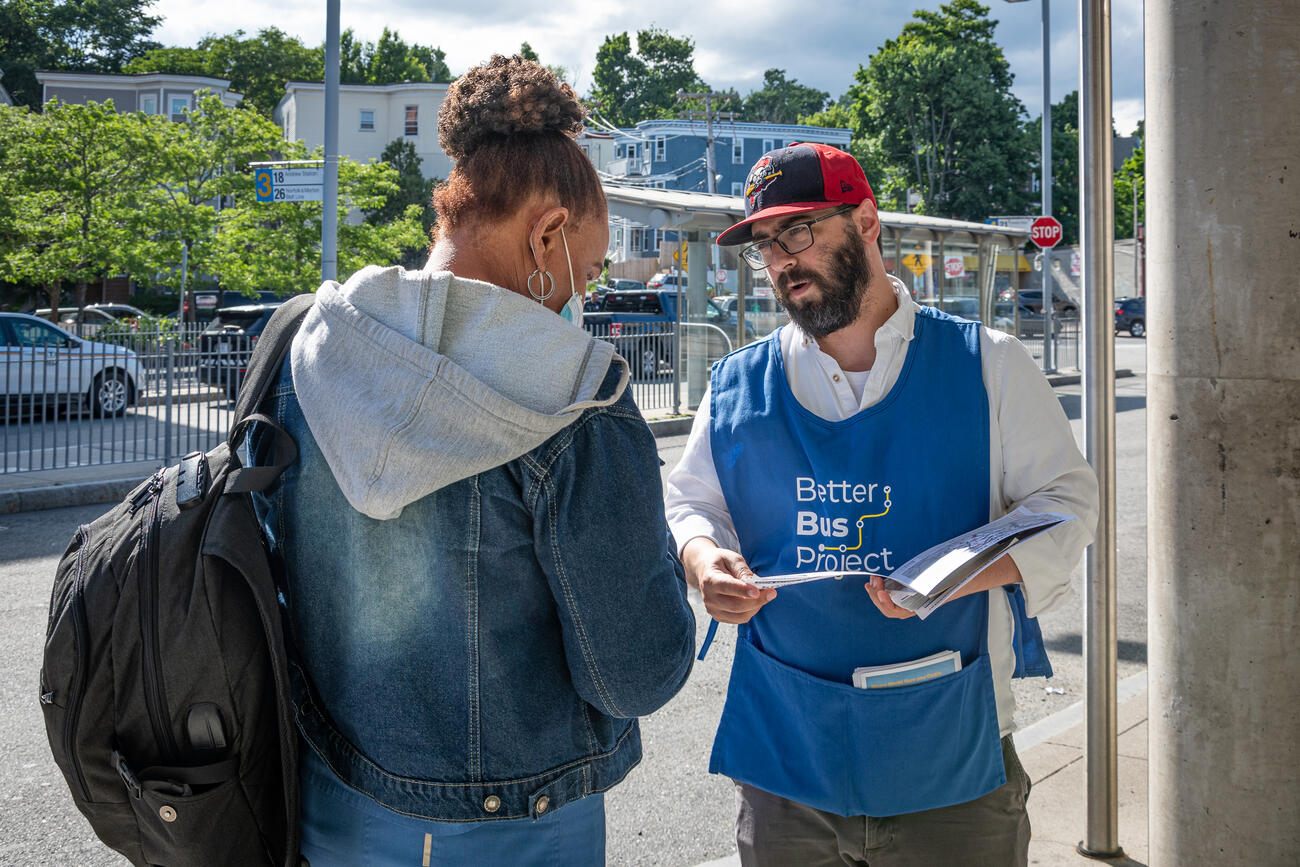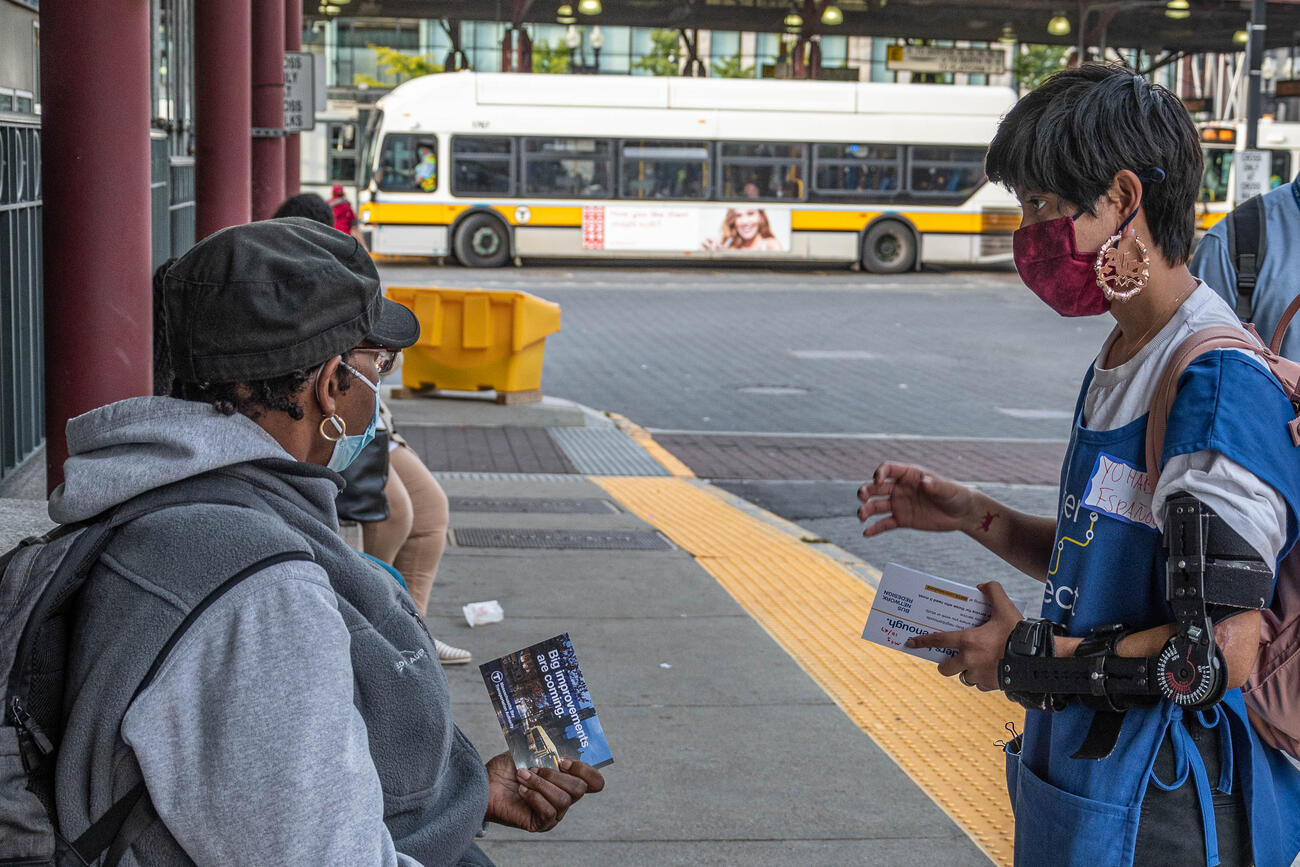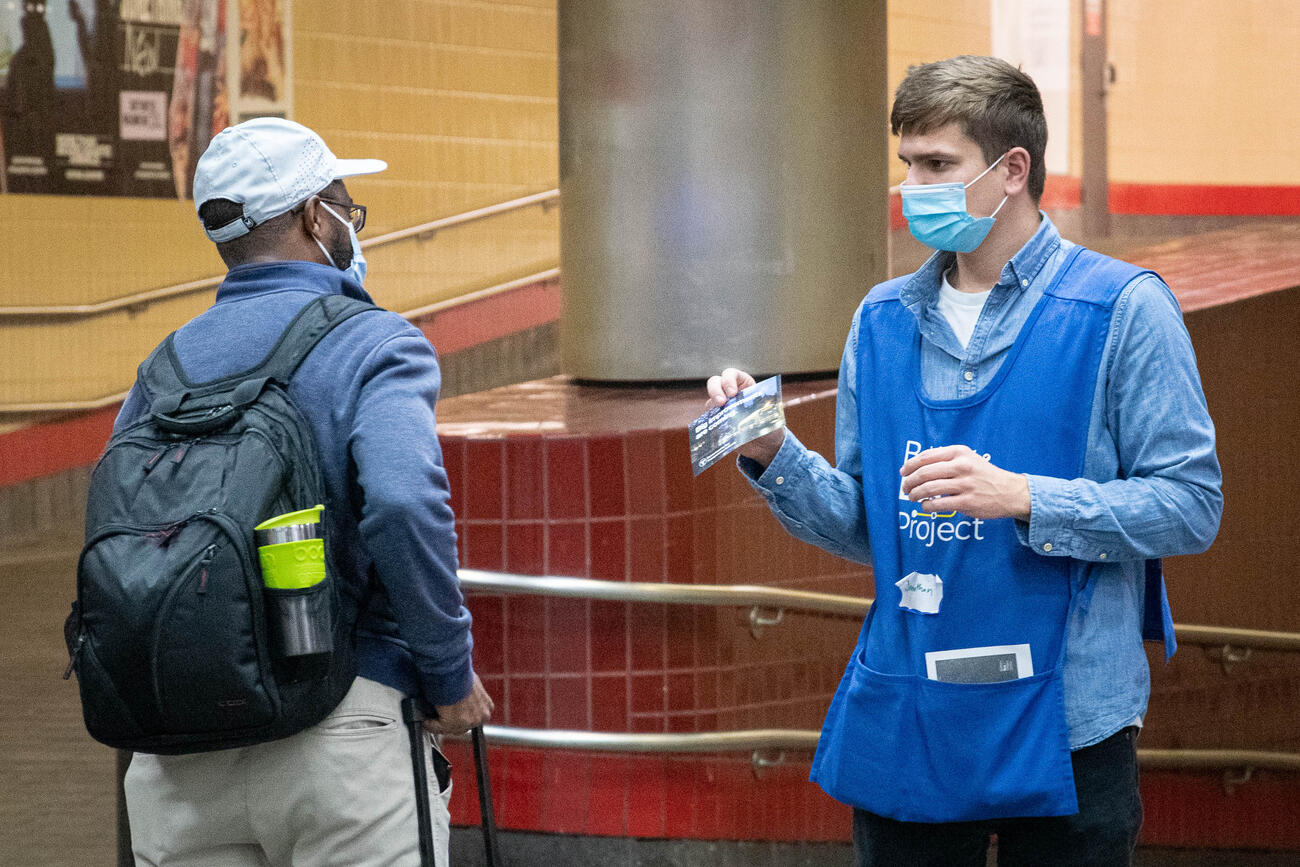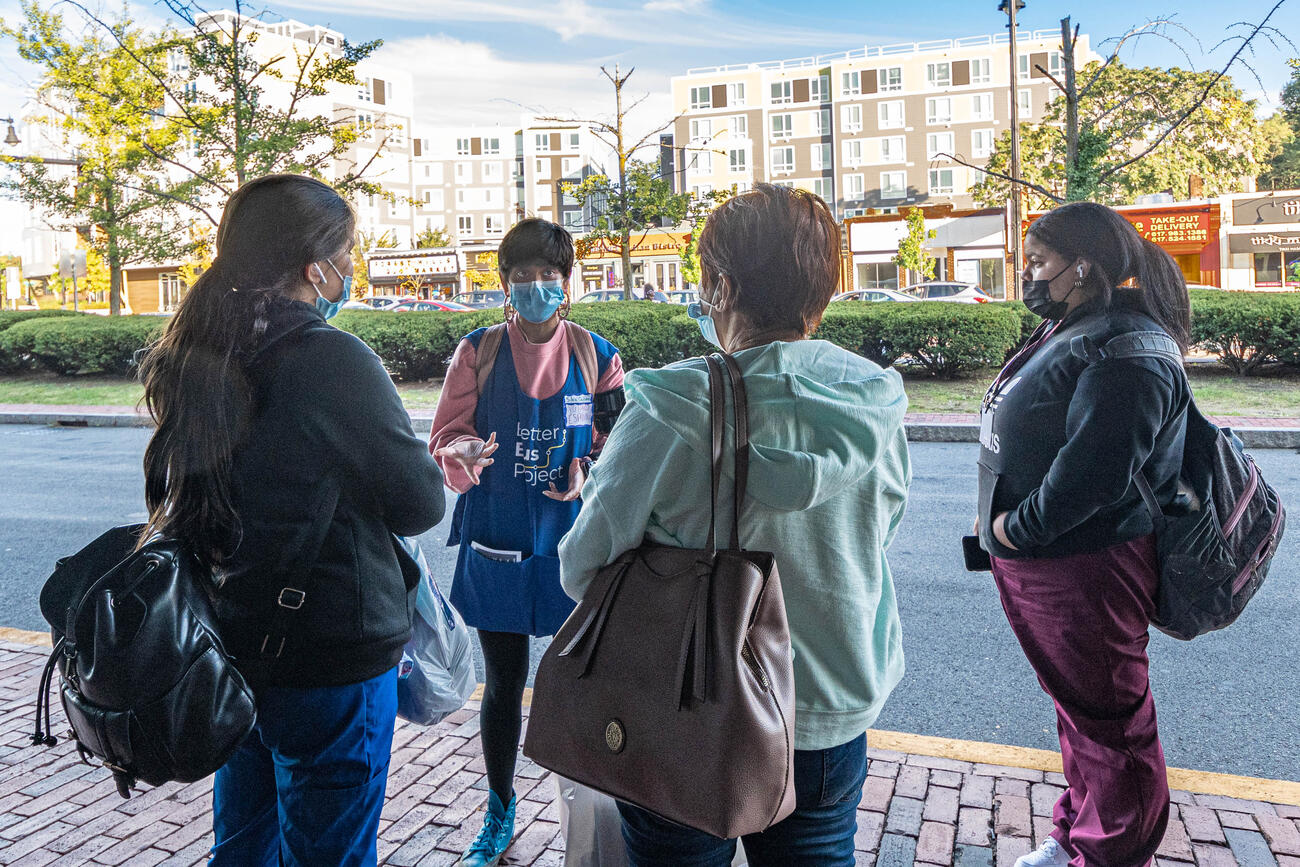Bus Network Redesign: Project Details
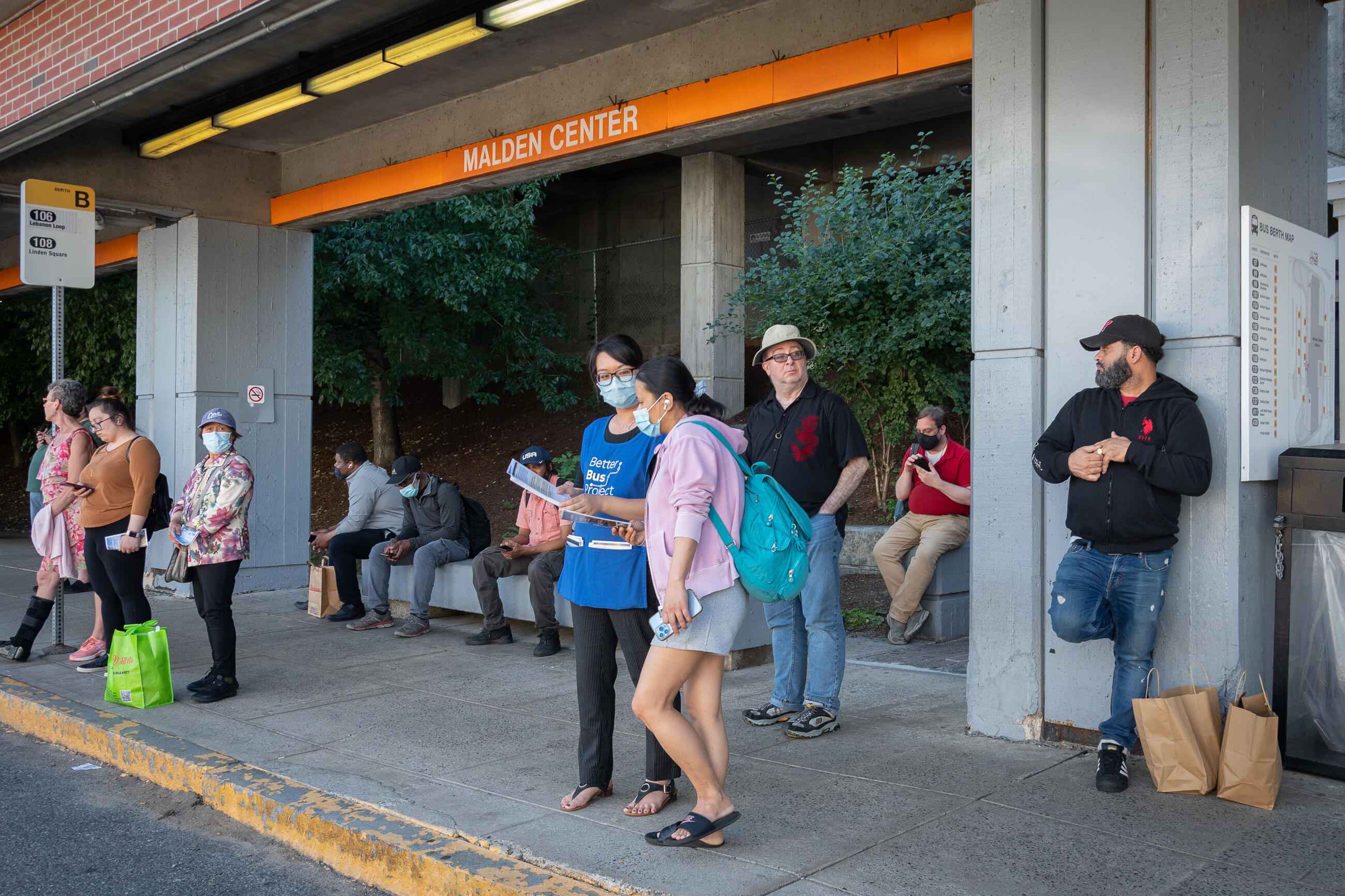
We partnered with the community to create changes to our bus network and used your input to create our Bus Network Redesign Final Report.
About This Work
Project Goals
The Bus Network Redesign is guided by six goals:
- Put equity first by prioritizing the needs of riders who depend on bus service
- Offer more frequent service in busy neighborhoods
- Provide more all-day service
- Create connections to new places
- Make the network simpler and easier to use
- Improve service reliability and accessibility by implementing transit priority infrastructure
Rider Benefits
The new bus network will:
- Provide 25% more bus service, with more weekend, evening, and mid-day trips
- Double the number of Frequent Bus Routes, operating every 15 minutes or less, all day, every day
- Improve connections to places beyond downtown areas
- Simplify bus service with fewer route variations and deviations
- Improve bus reliability and accessibility by focusing on transit priority measures and infrastructure upgrades
Planning Timeline
-
Summer – Fall 2021
-
Surveyed the community about needs and priorities for a new bus network
-
Spring – Summer 2022
-
Published draft bus network changes and gathered community feedback
-
Fall 2022
-
Incorporated community feedback and published a revised draft bus network
-
Winter 2022
-
MBTA Board of Directors approved the final proposal and the Title VI equity analyses
-
Spring 2023
-
Published the Bus Network Redesign Final Report
Learn more about how we got here
Final Report
In February 2023, we released a Bus Network Redesign Final Report. The report explains how we developed the new bus network, solicited input from the community, drafted the proposed network, and created an implementation strategy.
Download the full report, the executive summary, or see the highlights below to learn more about how we got here.
-
1. Our Current Bus Network
-
The MBTA bus network reaches nearly 1.9 million residents and provides more than 1/3 of all MBTA trips. However, it hasn’t changed much in the last 100 years and doesn’t provide adequate service to newer residential and commercial centers. It also focuses on frequent service during traditional weekday commute periods, with limited frequent service for mid-day, evening, and weekend trips. The bus network needs to be redesigned to better reflect today’s travel patterns.
-
2. Guiding Principles
-
There are six service design principles that helped structure the new bus network to meet the project goals:
- Prioritize frequency over one-seat rides
- Create rapid transit connections and maintain crosstown trips
- Focus on all-day service
- Combine routes to create high-frequency corridors
- Minimize route variations
- Minimize deviations on high-frequency routes
-
3. Data-Driven Approach to an Equitable Network
-
We analyzed the existing bus network and general Greater Boston travel patterns to inform the design of the new bus system, centering equity in decision-making throughout. Spatial analyses identified corridors with both populations and destinations that could support high-frequency bus service. Several potential networks were created, and a preferred network concept was selected and brought to the community for feedback.
-
4. Public Outreach
-
Many community members helped shape the new bus network. Riders, bus operators, community groups, municipalities, elected officials, partner agencies, and other community members all participated in the design feedback processes. They shared their issues, needs, and priorities for improvement and gave feedback on draft networks through public meetings, open houses, bus stop conversations, focus groups, online surveys, and other activities. More than 20,000 comments were received.
-
5. Future Bus Network
-
The future bus network incorporates community input, balancing a data-driven process with context from people’s lived experiences. It includes 30 bus routes with frequent service, service to additional destinations, expanded evening and weekend service to offer greater transit options outside traditional commute hours, and fewer schedule variations to make riding the bus easier and more predictable.
-
6. Implementation
-
The Bus Network Redesign will be implemented over a five-year period, beginning in December 2024. To make proposed changes, we will need to hire and train additional bus operators, hire implementation staff, communicate ongoing service changes, and invest more than $500 million in projects like street and intersection improvements, transit priority lanes, bus stop enhancements, new signs, and more.
How We Engaged with the Community
What We Heard
The Greater Boston community participated in the Bus Network Redesign, which received more than 20,000 comments.
We met you where you were and heard from you through:
- Over 23 open houses
- 85 municipality meetings
- 45 community group meetings and focus groups
- Bus stop pop-up events
- Coffee hours
- Online and paper comment forms
- Petitions
- Travel surveys
- Voicemails
Early community input focused on identifying bus system issues and prioritizing improvements. Later, you shared your feedback on our draft of the new bus network.
Key community direction included:
- Input on specific route changes, connections, and new routes in the proposed network
- Desire to maintain one-seat rides (trips that do not require a transfer)
- Desire to maintain front door access to medical facilities and senior housing
- Route length and reliability concerns
- Need for better connectivity to the rest of the MBTA system, including Commuter Rail stations, rapid transit stations, and ferry terminals
- Concerns about connections in locations with accessibility issues, like uneven sidewalks or stations with stairs
Your feedback directly shaped the recommended network, resulting in changes to 85 of the 133 routes between the draft and the final version.
Engagement Archive
Want to see more about what community members had to say? Check out materials from previous Bus Network Redesign events and virtual meeting recordings from 2018 to 2022 in the engagement archive.
Bus Network Redesign Engagement Archive
Bus Network Redesign MBTA Board of Directors (December 15, 2022)
Public Meeting | Bus Network Redesign - Fare & Service Equity Analyses (December 8, 2022)
Bus Network Redesign MBTA Board of Directors (November 17, 2022)
Public Meeting | Bus Network Redesign (November 14, 2022)
Public Meeting | Bus Network Redesign (November 2, 2022)
Bus Network Redesign MBTA Board of Directors (September 29, 2022)
Bus Network Redesign MBTA Board of Directors (October 27, 2022)
Public Hearing | Bus Network Redesign - Systemwide (July 28, 2022)
Public Hearing | Bus Network Redesign - Systemwide (July 26, 2022)
Public Meeting | Bus Network Redesign - Wonderland Station Open House (July 21, 2022)
Public Meeting | Bus Network Redesign - Systemwide Open House (July 19, 2022)
Public Meeting | Bus Network Redesign - Forest Hills Station Open House (July 12, 2022)
Public Meeting | Bus Network Redesign - Sullivan Square Station Open House (July 7, 2022)
Public Meeting | Bus Network Redesign - Malden Center Station Open House (June 30, 2022)
Public Meeting | Bus Network Redesign - Metrowest (June 28, 2022)
Public Meeting | Bus Network Redesign - Ashmont Station Open House (June 23, 2023)
Public Meeting | Bus Network Redesign - Minuteman & Metro North (June 22, 2022)
Public Meeting | Bus Network Redesign – Inner Core (June 16, 2022)
Public Meeting | Bus Network Redesign - Dewey Square Station Open House (June 14, 2022)
Public Meeting | Bus Network Redesign - Mystic River & North Shore (June 8, 2022)
Public Meeting | Bus Network Redesign - Quincy Center Station Open House (June 7, 2022)
Public Meeting | Bus Network Redesign - Boston (June 2, 2022)
Public Meeting | Bus Network Redesign - Harvard Station Open House (June 1, 2022)
Public Meeting | Bus Network Redesign - Chelsea City Hall Station Open House (May 26, 2022)
Public Meeting | Bus Network Redesign - South Shore and South Suburbs (May 24, 2022)
Public Meeting | Bus Network Redesign - Systemwide (May 19, 2022)
Public Meeting | Bus Network Redesign - Nubian Station Open House (May 18, 2022)
Public Meeting | Bus Network Redesign (October 27, 2021)
Public Meeting | Bus Network Redesign (June 8, 2021)
Bus Transformation Update: Part 2 (May 10, 2021)
Bus Transformation Update (January 25, 2021)
Bus Network Redesign Update: High Priority Corridors (November 23, 2020)
Bus Network Redesign Update: Early Action Service Principles (February 24, 2020)
Bus Network Redesign demonstration projects update (December 9, 2019)
Bus Network Redesign demonstration projects update (October 21, 2019)
Bus Network Redesign metrics update (September 23, 2019)
Bus Network Redesign policy and process update (July 23, 2019)
Bus Network Redesign update (March 25, 2019)
Bus service network overview and redesign (September 24, 2018)
Bus network strategy and service improvements (July 16, 2018)
Title VI Equity Analysis of Revised Bus Network
Projects that use Federal Transit Administration (FTA) funding must complete a Title VI equity analysis to make sure projects do not have a disproportionately negative impact on low-income riders or people of color. Advancing equity and providing access to bus service for riders who need it the most are key goals of the Bus Network Redesign. Central Transportation Planning staff evaluated the proposal using the MBTA’s Service and Fare Change Equity Policy (formerly known as the Disparate Impact and Disproportionate Burden (DI/DB) Policy). The analysis found no major Title VI concerns and the proposal was formally accepted by the MBTA Board on December 15, 2022.
